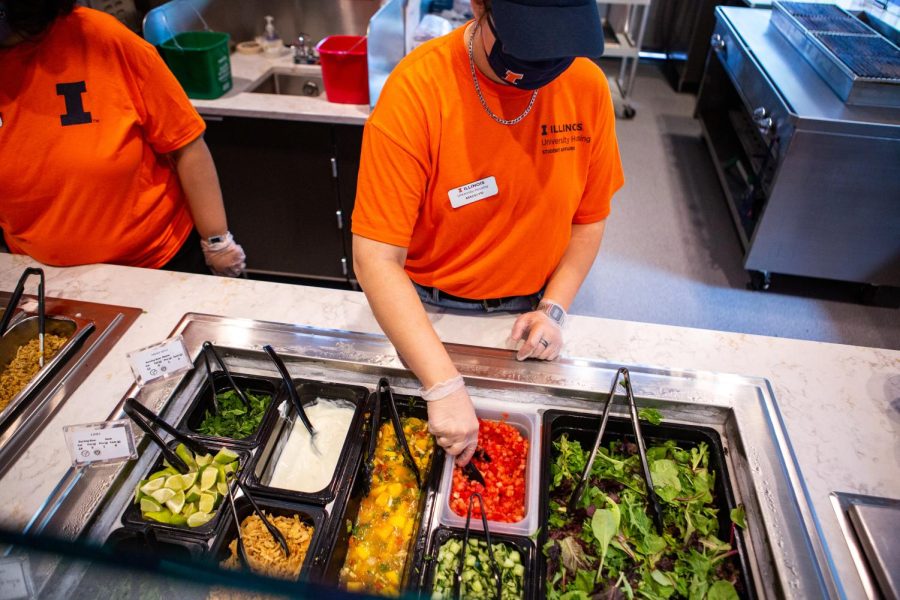Opinion | Students shouldn’t struggle for nutritional info
University housing employee prepares the salad bar at ISR on Aug. 27. Columnist Hamza Haq believes that there should be more clarity on nutritional information for university food.
Jan 21, 2022
In the Bromley Dining Hall, you can find nutrition info for most entrees available above the serving stations. Enter the veggie pizza — one “stick” allegedly includes 300 calories and 40 grams of protein.
Clearly, accuracy isn’t a priority for dining halls or else this magical pizza slice packing a whopping 40 grams of protein would be a hit worldwide.
Some self-serve options at University-affiliated public and private housing include inaccurate nutrition information for their food. Cheesy pasta dishes are listed with low amounts of saturated fat, salty dishes are listed with low amounts of sodium and cakey desserts are listed with low amounts of sugar. Some dishes do not have any nutrition information at all, leaving students to estimate that content for themselves.
To investigate this issue, I asked an anonymous worker at Bromley Hall how they calculated their nutrition info.
“A few of our items come in with the nutritional nutritions on it,” the employee said. “So if we do something different like fry it, we calculate the oil and do the math on what percentage of calories, total fats, saturated fat.
Get The Daily Illini in your inbox!
“We actually do math and break it down to the percentage that we serve. We put it on our ticket per serving or per sandwich or per ounces or per piece of chicken. It’s pretty accurate, I ain’t gonna say it’s 100% on the nose.”
Not 100% on the nose is an accurate assessment. Take a look at their grilled cheese for example — one sandwich is listed with 5 grams of saturated fat. However, Nutritionix shows that one grilled cheese has 13 grams of saturated fat. This is a difference of 25% and 65% of your daily value of saturated fat based on a 2000 calorie diet — which is substantial.
Students who care about their health shouldn’t have to settle for eating a salad and grilled chicken sandwich for all their meals. Healthy options are unnecessarily limited on campus dining hall menus. Taking a look at Bromley’s dining menu for the week of Nov. 29, the majority of options for lunch and dinner are foods high in saturated fat, sodium and enriched wheat. The same goes for Ikenberry’s dining menu.
Variety is possible for healthy options. Offering entrees including quinoa and lean meats — ones that aren’t just grilled chicken patties — is possible considering that students pay more for meal plans than the cost of eating out daily. These options don’t have to replace current meals but should still be available for students.
Considering that students are required to pay between $2,192 and $5,690 for their meal plans, opting to cook your meals is usually not a viable option. The amount of money lost by avoiding meals at dining halls is far too costly. Even if someone decides to take the loss and cook their meals, access to kitchens is limited, as students are often required to reserve time slots days ahead to use them.
The University’s dining halls promote a culture of choosing quick, tasty and unhealthy options which is problematic considering the poor diet culture of Americans. While healthier options are difficult changes to implement, the bare minimum should be accessible and accurate information for all students living in University-affiliated residences.
Hamza is a freshman in LAS.






